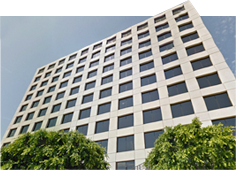All About U.S. Immigration for Physicians
Due to demand stemming from aging demographics, the number of foreign-trained physicians practicing in the U.S. continues to grow. According to the American Medical Association, International Medical Graduates (IMGs) make up approximately one-third the U.S. physician population. The heaviest concentration of IMGs is in New Jersey (45% of doctors), New York (42%), Florida (37%), and Illinois (34%). The largest national group is from India (20.7% of total), with doctors from the Philippines, Mexico, Pakistan, Dominican Republic, U.S.S.R., Grenada, Egypt, Korea and Italy comprising, in order, the top-ten countries of origin.
In order to immigrate to the U.S. and provide direct patient care, all International Medical Graduates (IMG) must first comply with federal immigration and medical licensure laws. Under the immigration laws, an IMG is considered a foreign national physician trained in any country other than in the U.S. or Canada. Canada-trained doctors are treated separately and have a slightly simplified set of requirements, discussed below.
The First Step to the U.S. For Most Doctors: J-1 or H-1B
In order to be eligible for a Green Card, a physician must generally complete their residency in the U.S. Most IMGs engage in residencies by one of two means—“J-1 Exchange Visitor” status, or “H-1B temporary worker” status. The J-1 status is a less cumbersome path for some, as it merely requires completion of Parts 1 and 2 of the USMLE, while the H-1B requires passage of all three parts of the USMLE. The downside of the J-1 status is that it requires the doctor to return home for two years after completing their J-1 training before they can immigrate to the U.S. Note: some doctors may qualify for a waiver of their “2-year home residence” requirement. By contrast, IMGs holding H-1B status are not subject to the home residence requirement and need not go through the waiver process.
With respect to H-1B residencies, typically, the residency program acts as the sponsor for the physician’s initial H-1B. Often, while the IMG is undergoing training, another program sponsor such as a hospital or medical group steps in to take on the second sponsorship—a traditional H-1B. Be aware that H-1B status is subject to strict annual quotas. However, certain employers (e.g., universities or tax-exempt non-profit organizations affiliated or related to universities) are exempt from these numerical caps.
Requirements: What Does a Physician Need to Practice in the U.S.?
In addition to completion of a U.S.-based residency program, an IMG must have a medical degree from a foreign medical school and certification from the Educational Commission for Foreign Medical Graduates (ECFMG). ECFMG Certification indicates that the IMG has attained knowledge equivalent to that gained in a U.S. or Canadian medical school. ECFMG certification requires that the physician must pass the USMLE Parts 1 and 2 as well as passage of an ECFMG-administered English language examination.
The requirements are different for Canadian-trained physicians. As they are not considered IMGs, they can be licensed in most U.S. states based on their provincial licenses, Canadian medical examination (LMCC) and training.
The Green Card Process (Traditional and NIW)
Most physicians applying for permanent residence in the U.S. do so by traditional sponsorship or the National Interest Waiver. Traditional Sponsorship entails the same three-step process which all other employment-based applicants undergo. The first step is labor certification. This is a process by which the petitioning hospital or medical group shows that it has tried to hire a U.S. physician for the position without success. The employer must meet a number of requirements including advertising the job in JAMA or another major national or specialty publication, then review all the CVs that come in to make sure no qualified U.S. physicians are available.
The employer secures a priority date for the physician on the date the labor certification is submitted to the Department of Labor. After labor certification, an immigrant visa petition is filed with the U.S. Citizenship and Immigration Services. Once the applicant’s priority date is current, the physician can apply for their Green Card if in the U.S., or their Immigrant Visa at a U.S. consulate abroad.
Physician immigration can also be accomplished via the National Interest Waiver (“NIW”). With this method, the petitioning employer demonstrates that it has been historically difficult to recruit a physician to the geographic area and that there exists a serious need for the physician’s services. The physician’s services must be needed in a medically underserved area. The IMG must agree to practice in the area for five years to obtain a green card through this method.
Conclusion
Each physician’s path to the U.S. is different—some by way of H-1B, and others through the J-1 program. Unique circumstances affecting the physician’s ability to work and live in the U.S. may apply. It is important to carefully discuss immigration eligibility and options with a knowledgeable immigration attorney to ensure the quickest and least problematic course of action.






